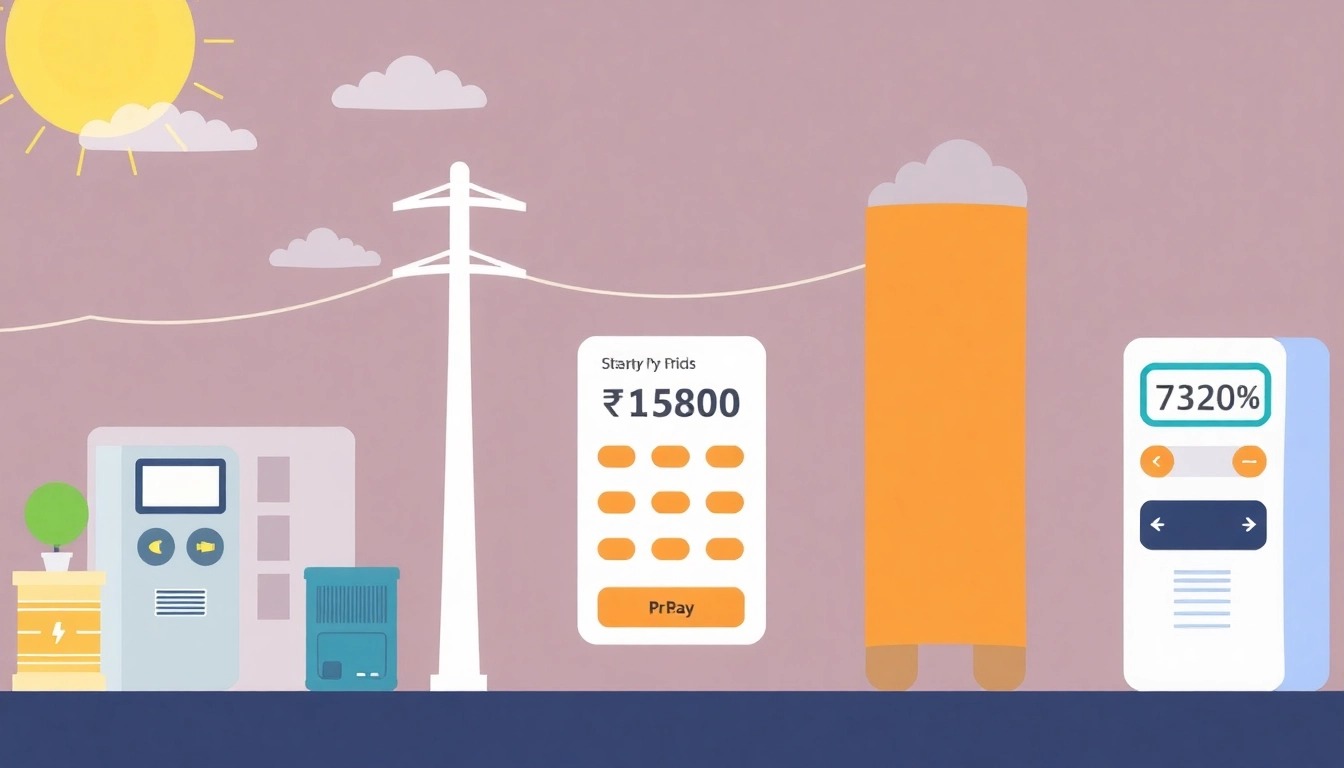
Understanding Elpris Idag
What is Elpris?
Elpris, or “electricity price” in Swedish, refers to the current market rates for electricity consumed in Sweden. It is primarily determined by the Nordic electricity market, where spot prices fluctuate based on supply and demand dynamics. Monitoring elpris is essential for consumers and businesses alike to manage energy costs effectively. For the latest rates, you can refer to elpris idag, which provides real-time pricing data.
How Spot Prices Work
Spot prices represent the cost of electricity for immediate delivery, calculated on an hourly basis. The prices are influenced by various factors, including consumption patterns, weather conditions, and the availability of renewable energy sources. During peak demand hours, such as winter evenings, spot prices tend to rise due to increased consumption, while they may drop during off-peak hours, like late nights or early mornings.
Importance of Monitoring Prices
For consumers, keeping an eye on elpris is crucial for making informed decisions about energy consumption. By understanding the fluctuations in spot prices, households can adjust their electricity usage to save money. Additionally, businesses can optimize operations based on price trends, thereby reducing operational expenses. Overall, monitoring elpris can lead to significant savings and more sustainable energy usage.
Using the Elpriskalkylator
Features of the Calculator
The Elpriskalkylator, or electricity price calculator, is a useful tool that helps users estimate their expected electricity costs based on current spot prices. Key features of the calculator include the ability to input specific consumption patterns, compare different regions, and project future costs based on historical data. This tool serves as a valuable resource for both residential and commercial users seeking to manage their energy expenses more effectively.
How to Use It Effectively
To use the Elpriskalkylator effectively, users should gather their monthly electricity consumption data. By inputting this information into the calculator, they can receive a tailored estimate of their electricity costs based on current and predicted spot prices. It’s beneficial to regularly update consumption data and monitor market trends to achieve the most accurate estimates.
Benefits of Accurate Calculations
Accurate calculations of electricity costs enable consumers to budget more effectively and avoid unexpected expenses. By understanding potential variations in elpris, users can plan their energy consumption accordingly, thereby maximizing savings. Moreover, businesses can leverage these insights to streamline operations and enhance energy efficiency, leading to a more sustainable approach to electricity usage.
Current Electricity Prices in Sweden
Hourly Price Trends
The current electricity prices in Sweden are subject to hourly fluctuations, reflecting real-time supply and demand. Typically, prices peak during high-demand hours and dip during off-peak periods. For instance, during winter months, the demand for heating can drive prices higher in the evening. By examining hourly price trends, consumers can make informed decisions about when to use electricity for appliances, heating, and other energy-intensive activities.
Comparing Regional Prices
Electricity prices can vary significantly across different regions in Sweden, influenced by factors such as local demand, generation capacity, and transmission constraints. Regions like SE3 (Stockholm) and SE4 (Malmö) may experience different pricing patterns due to their unique energy profiles and consumption behaviors. By comparing regional prices, consumers can identify opportunities for savings and potentially switch suppliers or modify their consumption habits to take advantage of lower rates.
Factors Influencing Prices
Several factors influence the spot prices of electricity in Sweden, including weather conditions, the availability of renewable energy sources, and market demand. For example, increased wind and solar energy generation can lead to lower prices, while extreme weather conditions that drive up heating or cooling demands can result in higher prices. Additionally, geopolitical factors and changes in policy can also impact electricity prices on a broader scale.
Future Price Predictions
Market Analyses
Market analyses suggest that electricity prices in Sweden will continue to be influenced by the ongoing transition to renewable energy sources and fluctuations in fossil fuel prices. Analysts often use historical data, combined with current market conditions, to forecast future trends. Staying informed about these predictions can help consumers and businesses plan for potential price movements and adapt their energy strategies accordingly.
Impact of Seasonal Changes
Seasonal changes significantly impact electricity demand and, consequently, spot prices. During winter months, demand typically rises due to heating needs, while summer may see variations due to cooling requirements. Understanding these seasonal patterns can help consumers anticipate price changes and adjust their electricity usage for maximum savings.
Expert Insights on Predictions
Experts in the energy market often provide insights and predictions regarding future electricity prices. Their analyses consider various factors, including government policies, technological advancements in renewable energy, and international market trends. By following these expert insights, consumers can gain a clearer understanding of potential price trajectories and make informed decisions related to their energy consumption.
Maximizing Savings on Electricity
Tips for Reducing Energy Costs
Reducing energy costs can be achieved through several practical strategies. Simple adjustments, such as using energy-efficient appliances, implementing smart home technology, and scheduling heavy energy use during off-peak hours, can lead to significant savings over time. Additionally, regular maintenance of heating and cooling systems ensures they operate efficiently, further reducing energy costs.
Choosing the Right Tariff
Selecting the right electricity tariff is crucial for maximizing savings. Consumers should evaluate different options, including fixed and variable rates, to determine which aligns best with their usage patterns and financial goals. Comparing various providers and their tariffs can also lead to better deals and lower overall costs.
Investing in Renewable Energy
Investing in renewable energy sources, such as solar panels, can provide long-term savings on electricity costs. By generating their electricity, consumers can reduce reliance on grid power and mitigate exposure to fluctuating spot prices. Additionally, government incentives and rebates for renewable energy installations can further enhance the financial benefits of such investments.